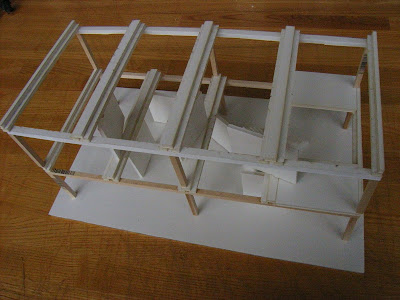Flexible House
Architecture is always designed by architects, who can be seen as generators and experienced by users, who can be seen as receivers. By designing a project, architects always predicts who will be the users, what the users might need, how will the users use this building and so on. According to the prediction, architects then design the architecture. Here, design is totally a top-down system and implies a certain degree of “determinism”. In this way, it seems like that users’ activities in the building is exactly predicted and designed by architects, or in another word “controlled” by the architect. Users always follow what the designer has provided to them. They enter the building from the main entrance where designers hope them to enter; follow the so called the right and best circulation which architects has figured for them; live and work in the room which architects has partitioned for them. They experience the same sequence of space every day. Connections to the building are passive and boring.
What if the building can be always felt fresh to users? What if users can experience the architecture in the way they wish? Then the architecture requires “Wilderness”. In the Wilderness from Far from Equilibrium written by Sanford Kwinter, the author said that “There is no central control, and the “design” does not come from the whole and trickle down to the parts, but rather travels in the opposite direction. Such bottom-up systems are called “subsumption architectures.” The natural universe is itself a subsumption architecture utterly “out of (central, single) control.” To give place to such out-of-control, adaptive, robust, self-directed designs is to allow, or to install, a degree of wildness within them.
Therefore, I am proposing a flexible house. The house should be designed by both the architect and user. The architect build up the basic framework of the house and the left work will be done by the user. During the life-long time, users can move the interior wall to adjust the layout, to add or take away some floor plates to form different space, to increase or decrease the number of the rooms according to the actual situation. There is no fixed circulation path and the experience in the house is always new. The users play a more active role in the house. In this way, I hope to erase “determinism” in a certain degree, and achieve the “wilderness” by losing the ability to predict -from the outside- what it will do.





No comments:
Post a Comment